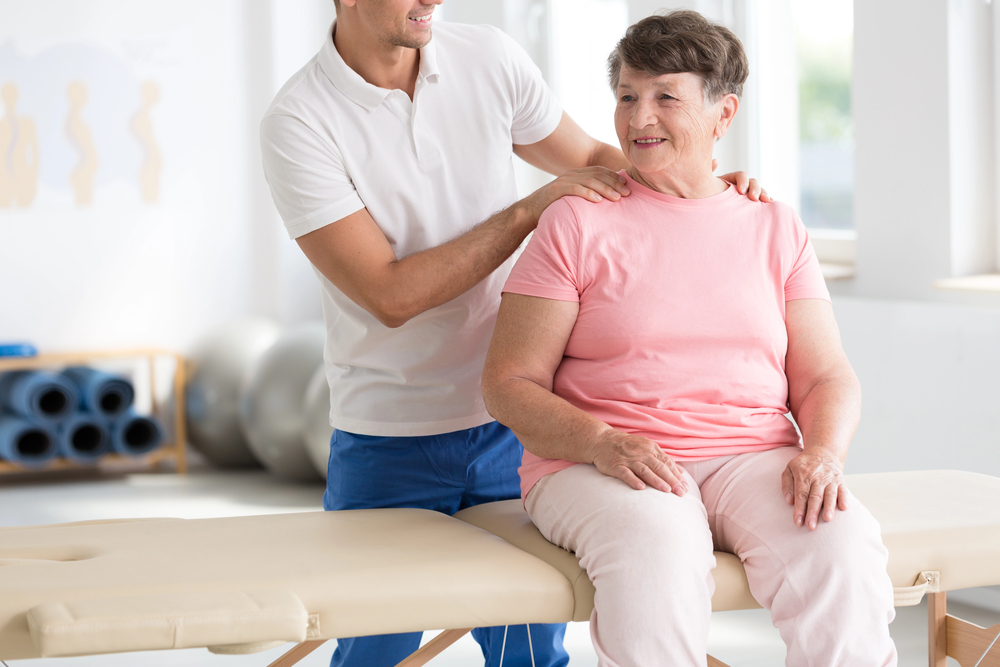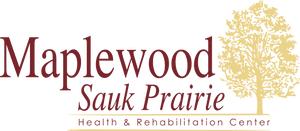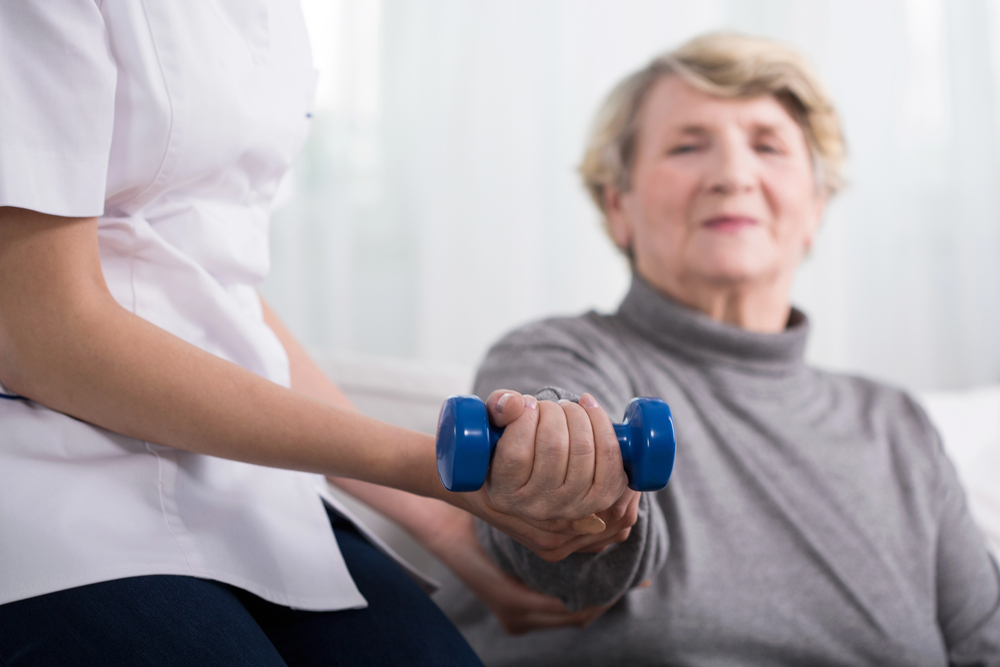
April is Parkinson’s Awareness Month
April 11, 2025
How to Help Your Senior Parents Stay Active (Even if They’re Not into Exercise)
June 9, 2025A stroke is a sudden stop of blood flow to the brain, which may lead to brain injury. It can greatly affect many parts of life. For stroke survivors, getting better often means joining a rehabilitation program. This program helps restore abilities and improve their quality of life. Doctors, nurses, and occupational therapists guide this process. They focus on helping each person become as independent as possible. They also work to solve the specific challenges that each individual has.
Understanding Stroke Recovery and Rehabilitation

Stroke recovery is different for everyone. It’s a personal journey affected by the severity of the stroke, which area of your brain was impacted, and your overall health. Some stroke survivors can recover fully, while others may face ongoing challenges that need support and adjustments.
Stroke rehabilitation is very important during this time as it is a crucial part of recovery. It provides a plan to help regain abilities and learn new ways to do everyday tasks. It gives stroke survivors the tools they need to handle their challenges and work toward the best results possible.
The Role of Rehabilitation in Stroke Recovery
Rehabilitation is key to stroke recovery. It helps stroke patients get the skills they need to regain their independence and improve their quality of life. By learning about the brain’s ability to adapt and change, known as neuroplasticity, rehab programs are designed for each person’s specific needs.
Rehabilitation uses targeted therapies and exercises. These help stimulate different parts of the brain and encourage the creation of new pathways to replace damaged ones. It also involves practicing important skills again and again, which allows stroke survivors to relearn lost abilities or find new ways to do their daily tasks.
The main goal of rehabilitation is to help stroke survivors live as fully and independently as they can.
Importance of Early Intervention in Stroke Rehab
The time right after a stroke is very important for recovery. During this period, the brain is open to change, making starting stroke rehabilitation early very important.
Starting therapy sessions as soon as possible, even in the first few days, can greatly affect long-term results. Quickly starting a rehabilitation plan helps therapists assess the damage. They can identify specific needs and create plans for the affected area of the brain.
Beginning treatment early helps people regain lost abilities and prevents problems that can happen with being still for a long time. This early action is especially important for those with a transient ischemic attack (TIA), which is known as a “mini-stroke.” Quick treatment can lower the risk of having a more serious stroke later on.
Key Components of Stroke Rehabilitation
Stroke rehabilitation involves many different types of therapies and help. It aims to tackle the physical, mental, and emotional issues that can come up after a stroke. A group of healthcare professionals usually works together to make a personalized rehabilitation plan.
This plan often has physical therapy to help patients gain strength and movement. It includes speech therapy to improve communication skills and occupational therapy to support daily living activities.
Physical Therapy Following Stroke to Regain Strength and Mobility
Physical therapy plays a key role in stroke rehabilitation. It focuses on helping people affected by a stroke improve their physical function and mobility. Skilled physical therapists work closely with stroke patients to boost their motor skills, strength, coordination, and balance.
They use targeted exercises and activities to tackle various mobility issues. These range from simple tasks like walking and staying balanced to more complex movements needed for daily living. Therapists use different methods, such as range-of-motion exercises, gait training, and functional electrical stimulation. This helps to strengthen muscles and support motor recovery.
In the end, the main goal of physical therapy is to improve mobility. This allows individuals to regain their independence in activities of daily living, like dressing, bathing, and moving around their homes and communities.
Speech Therapy for Communication Recovery After Stroke
A stroke can greatly affect communication. It may make it hard for a person to speak, understand language, read, and write. Speech therapy is very important. It helps people recover their communication skills and improves their quality of life.
Speech-language pathologists are experts who help with different communication problems after a stroke. For people with aphasia, which affects how they understand and express language, speech therapy focuses on:
- Improving speaking abilities: This includes exercises for articulation, word retrieval, and practicing sentence formation.
- Enhancing comprehension: This involves strategies to understand both spoken and written language.
- Exploring alternative communication methods: These might include using picture boards, gestures, or special devices.
Speech therapy aims to help restore communication skills, which supports social interaction and boosts overall well-being.
Psychological Support and Mental Health Care
Experiencing a stroke can be tough emotionally for both stroke survivors and their families. It’s not just about the physical and mental changes. The recovery process includes focusing on cognitive and emotional health and making necessary lifestyle changes.
Getting psychological support and mental health care is very important in stroke rehabilitation for both patients and caregivers. These resources give tools and strategies to help deal with emotional struggles and guide recovery.
Addressing Emotional Changes After a Stroke
Stroke survivors may face many emotional changes, such as feelings like anxiety, depression, frustration, and a sense of loss. Such feelings are a normal reaction to the difficulties, including paralysis, that come with recovering from a stroke.
It is important to provide psychological support during this time. This support can help stroke survivors deal with these feelings and keep their mental health strong. Skilled mental health professionals can give tailored therapy, counseling, and support groups that meet the specific needs of stroke survivors.
When a safe and supportive environment is provided, psychological support lets individuals handle their emotions better. It also helps them create ways to cope and build strength as they go through their recovery journey.
Talk Therapy and Group Support Sessions
Talk therapy, which is also called psychotherapy or counseling, gives stroke survivors a safe and private place to share their thoughts and feelings with a trained mental health care provider. Through talk therapy, people can:
- Process the emotional impact of the stroke: They can explore feelings of grief, loss, and how to adjust.
- Develop coping mechanisms: They can learn ways to handle stress, anxiety, and depression.
- Address relationship challenges: They can learn how to deal with changes in family dynamics and social interactions.
Group support sessions also provide a great chance for stroke survivors to connect with others who have had similar experiences.
Techniques for Enhancing Speech Recovery
Recovering speech after a stroke takes time. It usually includes a mix of regular speech therapy methods, new technologies, and personal exercises. Speech-language pathologists team up with each person to find their unique communication problems. They create plans that focus on those specific needs.
These can include practicing sounds and using helpful devices. The aim is to enhance communication skills and boost the quality of life.
Tools and Technologies Used in Speech Therapy
Speech therapy has embraced exciting new ways to enhance speech recovery, incorporating innovative tools and technologies into traditional treatment approaches. These advancements provide engaging and effective methods for individuals to practice and improve their communication skills.
Exercises for Improving Speech Clarity and Comprehension
A range of exercises can help improve speech clarity and understanding for people recovering from communication issues after a stroke. These exercises focus on strengthening the muscles used in speech, improving how words are formed, and helping with language skills.
Some helpful exercises are:
- Articulation drills: Repeating sounds, syllables, and words to get better at clarity and pronunciation.
- Tongue twisters: Fun phrases that help with specific speech sounds.
- Reading aloud: Practicing reading lines out loud to get better at fluency and understanding.
- Conversation practice: Talk with family, friends, or therapists to help natural speech flow.
Regular practice of these exercises, along with support from a speech-language pathologist, can improve speech clarity and communication skills.
Conclusion
Stroke recovery is a gradual process that demands comprehensive rehabilitation, essential for rebuilding strength, speech, and spirit. At Maplewood Sauk Prairie Health and Rehabilitation Center, we emphasize the importance of beginning early and employing a diverse array of therapeutic approaches. Our program integrates physical therapy, speech therapy, and emotional support to foster recovery. Diligence and the right resources can significantly enhance speech and restore independence. Professional guidance is crucial to optimize the recovery journey. If you or a loved one is navigating this path, consider our specialized care and support to help regain control over life’s essential functions.
References:
https://www.hopkinsmedicine.org/health/conditions-and-diseases/stroke/stroke-recovery-timeline
https://www.mayoclinic.org/diseases-conditions/stroke/in-depth/stroke-rehabilitation/art-20045172


